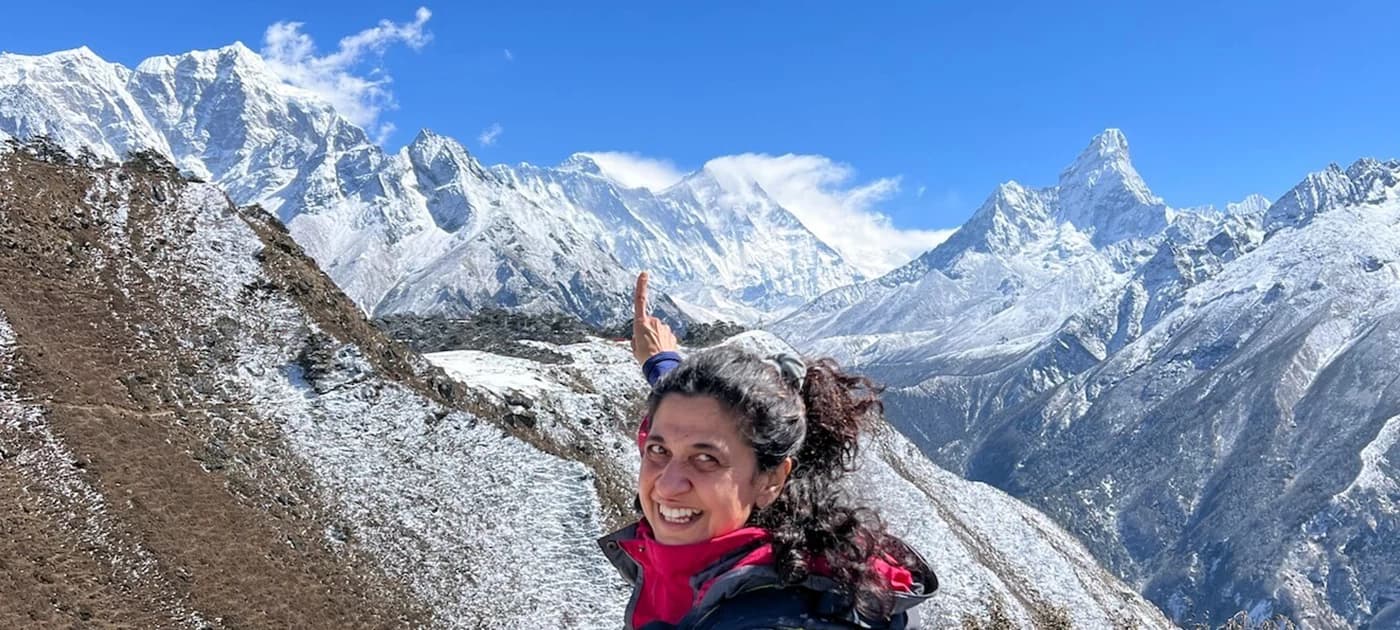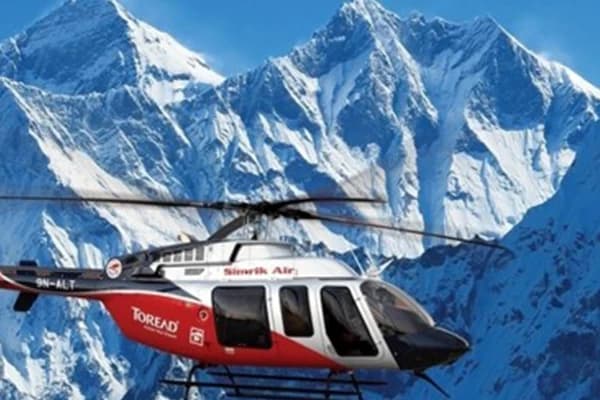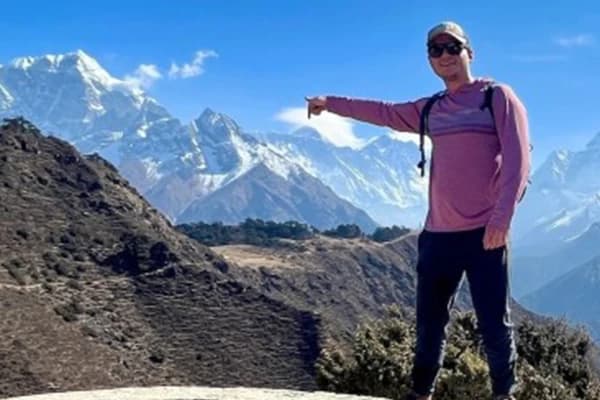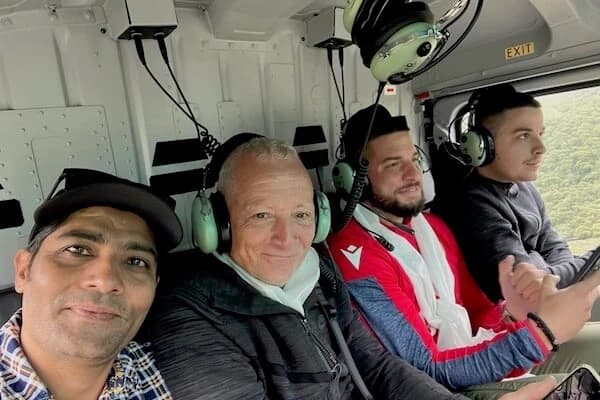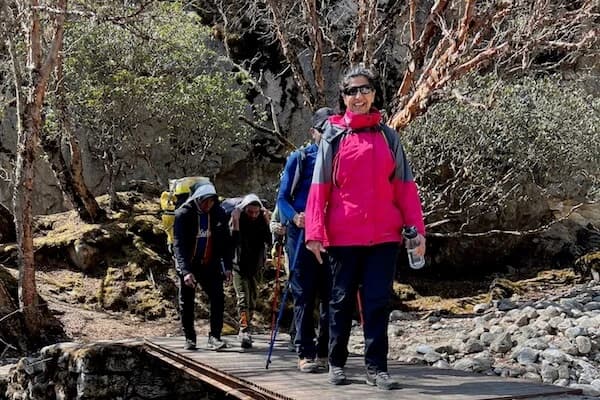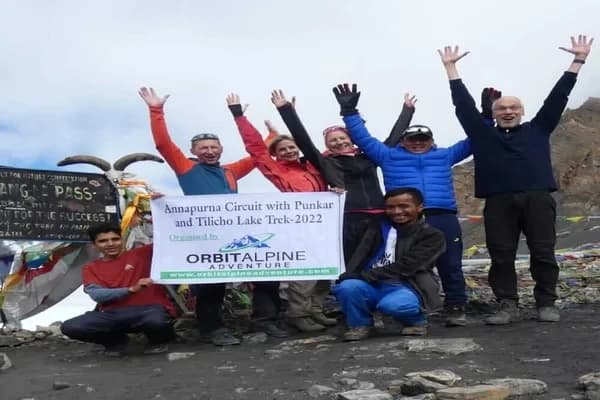Amid the toughest and most gratifying treks in the world lies the Everest Three High Passes Trek, which lets you to pass through three of the uppermost and most remote passes in the Everest region: Kongma La (5,535 meters), Cho La (5,420 meters), and Renjo La (5,340 meters). This is also a chance to visit such iconic places as Everest Base Camp, the Gokyo Lakes, and Kala Patthar, with an all-around view of some of the uppermost peaks in the world, such as Mt. Everest, Lhotse, Makalu, and Cho Oyu.
Best Time for Everest Three High Passes Trek
The ideal time of year to spend on this trek is vital in how to enjoy and complete it. The climate conditions, path conditions, and overall experience will hugely contrast depending on the season at the Kangchenjunga High Passes Trek. This article will put highlights on the best time to Everest Three High Passes Trek: different seasons with their advantages and disadvantages and what to experience regarding climate, crowd levels, and track conditions.
Spring (March to May)
Overview
Spring is the second most high walking season around the Everest region and again for very good reasons. The climate is quite stable, with clear skies and comparatively moderate temperatures. The spring season is from March to May, which is quite often supposed as the second-best time to start the Everest Three High Passes Trek.
Weather Conditions
In spring, the temperatures at lower heights remain mild, from 10°C to 15°C in the day, and at night, they even drop as much as 0°C or somewhat below. In higher altitudes, the temperature varies on the day between -5 and 5 degrees Celsius. At night, it may fall as low as -10 degrees or even much lower.
It is comparatively dry, and little chances of rain occur linked with the monsoon season. Though, at higher altitudes, sometimes, it may snow, and more so during March. The skies are classically clear with good visibility and remarkable sights of the Himalayas.
Trail Condition
Spring paths will be in good shape, being moderately free of snow and ice, unlike the winter months. There will be melting snow from the winter months, so routes will become easier. But during spring, like in March, there can still be some snow and ice on these trails at high raises around the high passes.
As the season advances, the paths get busy with explorers, mostly during April and May, as it is one of the major walking seasons to Everest. Many tourists can sometimes overcrowd some parts of the trail, but in general, the experience of spring walking remains beautiful because of the auspicious weather and flourishing natural beauty.
Flora and Fauna

Spring is the time of rhododendrons, the national flower of Nepal, which are in full blossom and add much beauty to the backdrop. The lower parts of the walk are full of these lovely flowers, and many other wildflowers that together create a gorgeous environment. This is also a great time to view the numerous species of birds and other wildlife that this region holds it.
Pros of
- Spring has the best steady weather, clear skies, and sensible temperatures, seamless all around for trekking.
- Great views: The clear skies provide remarkable all-around views of the Himalayas.
- Flower season: Rhododendrons and other wildflowers bloom to give an explorer’s experience of colors.
Disadvantages
- Crowded Trails: Spring is the main season for trekking; there will be many explorers on trails, especially in April and May.
- Higher Prices: Prices of lodging and services are higher compared to other seasons since it is a topmost time for tourism. This will peak through the autumn season, from September until November.
Autumn (September – November)
Overview
Autumn is mostly well-thought-out is the best time for the Everest Three High Passes Trek. The season covers from September to November with steady weather conditions, clear skies, and moderated temperatures. This is the time of the year well thought out to be a high season for Everest Region treks making it striking to trekkers as well from around the world.
Weather Conditions
Autumn is perfect for trekking; the daytime temperatures range from 10°C to 15°C at lower elevations, and at a higher elevation, they range from -5°C to 5°C. Temperatures at nighttime drop to 0°C at lower elevations and below -10°C at higher elevations.
Much of the time, clear skies, and the mountains and sceneries are visible with clarity. The amount of rainfall is insignificant, so you are not unlikely to face either rain or snow over the paths. But by November, as you ascend higher and the height rises, it starts getting cold, and snow can be predictable over the high passes.
Trail Conditions
Autumn trails are in very good condition, dry and constant, so it's easier to trek. The three high passes, namely Kongma La, Cho La, and Renjo La, have moderately light snow and ice during that period; hence, crossing these passes is relaxed equated to other periods. As in any high-altitude trek, one must expect changing trail conditions. These are more of a likely during the late autumn period, once the snowfall starts.

Autumn is the strongest trekking season through the year and therefore means high traffic of trekkers on the paths of Everest Region. This results in conditions of crowding, to be exact, at viewpoints and teahouses, which are moderately liked by trekkers. The large number of people also means that every capability and facility along the trail is fully operational, leading to a more relaxed experience in trekking.
Flora and Fauna
While spring remains the time for flowers, autumn has a beauty all its own. The scenery just after the rains is green, and clean, crunchy air gives depth to the mountain views. Forests at lower raises continue to harbor rich greenery, and you may come across wildlife like Himalayan Thar, musk deer, and numerous kinds of birds.
Pros
- Best Weather: The climate during the autumn season is reasonable with clear and stable skies, and the temperatures continuing a calm set.
- Panoramic Views: September provides post-monsoon clarity of the Himalayan high peaks.
- Trail Conditions: The path is dry and steady making walking easy and thus trekking smooth.
Weaknesses
- High Traffic: The peak season for trekkers during autumn; hence, paths and tea houses are overfilled.
- Higher Costs: With this bigger demand during this season, lodging, and other service prices go higher.
Winter (December – February)
Overview
Winter is possibly the least favorite season for people to occupy in the Everest Three High Passes Trek just because of the severe weather conditions. The period usually falls in the months of December, January, and February due to the freezing cold, heavy snowfall, unfavorable conditions in the trail, and other overall factors. But for those skilled trekkers who look for comfort and a superb adventure, winter can offer a totally different view on the Everest region.
Weather Conditions
Winter temperatures in the Everest region are deeply chilling, especially towards higher altitudes. Day temperatures at lower altitudes would range from -5°C to 5°C, while at night, the thermometer could drop to as low as -10°C. At higher altitudes, day temperatures could be as low as -10°C to -20°C, with the mercury dropping down to -25°C or even less during nighttime.
Heavy snowfalls are normal winter incidents, which usually occurs during January and February. All high passes like Kongma La, Cho La, and Renjo La are usually suppressed under deep snow that sometimes cannot be crossed. It is also very cold with lots of snow that importantly reduces the level of visibility, hence does not let someone enjoy the beautiful all-around views that the walk is usually known for.
Trail Conditions
Most of the journeys take a different length in the winter, as the snow and ice may cover the better part of the paths. This makes the treks more of a challenge and risky, especially in the case of high passes with heavy snow. Very similarly, temperatures are awfully cold, making adjustment more difficult and therefore growing the risks of altitude sickness.
The paths are much quieter and you are likely to travel in a more private environment. This factor also means that many of the teahouses and lodges may be closed, mainly up at higher altitudes, which could limit the accessibility of resources and your lodging options.
Flora and Fauna
The winter season is not a perfect period for seeing flora and fauna in the Everest region. The cold drives most animals to lower altitudes or hibernation, and the vegetation is mostly resting. However, the winter scenery has uneven beauty, with snowed peaks and frozen lakes to visualize a dramatic and unearthly environment.
Benefits
- Solitude: One of the advantages of wandering in winter is that the wilderness offers more privacy, either amongst the trekkers or regions visited.
- Unique Views: The snow scenery provides exclusive and dramatic viewpoints of the Everest region.
Drawbacks
- Severe Weather: Exciting cold, heavy snowfall and ice, make winter trekking too challenging and life threating.
- Minimal facilities: Most of the teahouses and lodges remain shut down, which provides minimal lodges and lodging and other conveniences.
- Inaccessibility to High Passes: Deep snow and icy conditions cover the high passes during this time.
Monsoon (June – August)
Overview
The least promising time to do the Everest Three High Passes Trek is during the monsoon season, from June to August. Days are normally wet and the weather humid; on top of that, the paths get pretty slippery. The monsoon brings a number of difficulties: landslides, leeches, and reduced visibility. However, those willing to courageous the elements can experience a different kind of walking during this season.
Weather Conditions
In overall, the monsoon season features hefty rainfall throughout the Everest region, especially in the lower elevations. The climate here is between 10°C to 20°C during daytime and between 5°C to 10°C at nighttime, below 6000 feet. The temperatures range from 0°C to 10°C during the daytime, between 6,000 to 12,000 feet. However, it will dip to -5°C or lower at night. Indigo Open.
Trail Conditions
This is the period of hard walking on a slippery path because there is hefty rainfall, which makes the path muddy and slippery, hence making the walk harder. The continuous rainfall may also cause landslides, especially in the lower parts of the trek. Most of the time during the monsoon season, the high passes, like Kongma La, Cho La, and Renjo La, are also covered by clouds, with poor views and risky crossing.
Again, these are leeches, especially in the lower and more forested areas of the journey in monsoon. They are however harmless and simply bother value plus add to the general discomfort of walking in wet conditions.

High passes mean more time spent above the tree line, where there is barely any vegetation, varied scenery, topography, rocky terrain, and uneven, rocky trails. Therefore, not many trekkers hike the Everest High Three Passes Trek during the monsoon, because travelers believe monsoon weather and track conditions are unfavorable. This directly means the path will have fewer crowders, and you can probably trek in privacy. But the decreased number of trekkers also suggests that some teahouses and lodges are closed, especially in the remotest regions.
Flora and Fauna
This is the rising season in the Everest region, with luxurious forests turned an exciting green and waterfalls at their peak. The lower regions of the trek are full of life, and you may even spot some bird species other than butterflies or other insects.
The thick flora along with the heavy rain do not enjoy the environment to the core and the peaks of the mountain are not obvious due to the cloudiness of the sky also the passes is terrible to cross during this monsoon season, the all-around views are not very evident due to the weather being foggy and also the scree and descent of the same are soggy and slippery.
Pros:
Not Crowded: The number of trekkers is less during the monsoon season. Thus, the trek can be enjoyed and travel around ideally.
The land gives a beautiful and luxurious green look to the pavements and surroundings giving a perfect beautiful all-round view.
- Heavy Rain, High Humidity, and Poor Visibility: The hefty rainfall, high humidity, and poor visibility make the trek period difficult in the monsoon.
- Muddy and Slippery Trails: It turns the paths muddy and slippery which increases the chances of falling and getting hurt.
- Leeches: Leeches are a general bother during the monsoon and particularly in the lower altitudes of the trek in the forested regions.
- Limited Views: Views from the mountains normally are hampered by the clouds and overcast skies reversing the overall experience of trekking.
Conclusion
The perfect time for the Everest Three High Passes Trek is a severely personal thing. If you wish to get the best climate, great views, and perfect conditions on the trail, that would be autumn, from September to November. But, if you want to see the hyped flora of the area and do not mind crowds, go in spring, from March to May.
Winter (December to February): suitable: only for experienced, well-prepared, and ardently insistent trekkers. Monsoons (June to August) are a very difficult time to go trekking, and combined with the weather, trail conditions tend to be very tough, but it gives a different and much more picturesque experience to those who love testing their courage.
Eventually, the best time for the Everest Three High Passes Trek is an individual choice, based on your goals, level of experience, and your readiness for new challenges like bad weather and muddier trails. Whichever season you go to, effective previous homework and adjustment are the main factors for a safe and effective trek to this remote part of the wonderful world.
FAQs of Everest Three High Passes Trek
1. What is the Everest Three High Passes Trek?
The Everest Three High Passes Trek is an adventurous trek in the Everest region of Nepal that includes three high mountain passes: Kongma La Pass at 5,535 meters, Cho La Pass at 5,420 meters, and Renjo La Pass at 5,340 meters. Along the way, you will reach all the highlights of this area: Everest Base Camp, Gokyo Lakes, and Kala Patthar, with a panoramic sight of some of the highest peaks in this world, one of them being Mount Everest.
2. How many days will be required to allocate for the Everest Three High Passes Trek?
Normally you will require 18 to 21 days depending upon your pacing, acclimatization days, and the nature of your itinerary. This also includes acclimatization days rest days, Site seeing popular destinations such as Everest Base Camp and Gokyo Lakes
3. What is the most recommended time to do the Everest Three High Passes Trek?
The best of time for trekking would be autumn (September to November) and spring (March to May) as these periods would have good weather with clear skies and moderate temperatures. The angle of the sun's rays will be placed in both these seasons to pull out the real beauty from the high snow-capped mountains.
4. How tough is the Everest Three High Passes Trek?
The Everest Three High Passes Trek is, unquestionably, the most complicated and demanding of all treks in the Everest region. It requires a reasonable level of physical fitness, stamina, and mental determination. Challenges include long walking days, steep climbs and descents, three high passes over 5,000 meters, and high altitudes.
5. Do I need prior trekking experience to do this trek?
While high-altitude trekking experience is not a pre-condition, it's an added advantage for the candidates. [The] Everest Three High Passes Trek is an extremely demanding effort. Previous experience of undertaking multi-day long treks, high altitude conditions, and consistently challenging terrains will be very helpful.
6. Can we get altitude sickness while doing this trek?
Altitude sickness is of high concern as the elevation goes very high during the trek. Proper acclimatization, slow trekking pace, constant hydration, and knowledge of the altitude sickness symptoms can also be some prevention of it. The best remedy could be descending to lower altitudes in case of severity.
7. Accommodation Type Taken During the Trek
Accommodation in Everest Three High Passes Trek is mostly provided through teahouses. It is a basic form of lodge that provides you with twin beds and a common bathroom. On some teahouses, the bathroom might be attached, but on most teahouses, the bathroom is shared. The teahouses are definitely better and more equipped in the more popular places like Namche Bazaar. In the off-the-beaten trek zones though, they are stripped down to the bare minimum.
8. What to pack for the Everest Three High Passes Trek?
Packing the correct gear is necessary for a successful trek. The essentials include:
- Warm clothes (e.g. layers, down jacket, thermal wear)
- Waterproof jacket and trousers
- Trekking boots of good quality with proper ankle support
- Sleeping bags that can bear cold temperatures
- Poles for trekking
- Protection from the sun
- First aid kit with altitude sickness medicine
- An adequate hydration system, such as bottles for water or a hydration bladder
- Energy snacks and bars
- Headlamp and independent batteries
- Personal toiletries.
9. Do I require a guide and porter on the trek?
The trek can all be self-guided, though hiring a local guide is strongly suggested, especially for the Everest Three High Passes Trek, mostly because of the extended difficulty and the remote route. A guide will have much local knowledge, will help find the right route and take care of all the problems or emergencies. Make sure you hire the porter to carry the heavy gear, so you can just walk endlessly.
10. What permits are needed for the trek?
You are required to carry along the following permits when you undertake the Everest Three High Passes Trek:
- Sagarmatha National Park Permit: This pass is needed when entering the national park encompassing Mount Everest.
- Khumbu Pasang Lhamu Rural Municipality Permit: Replaced the TIMS (Trekkers' Information Management System) card and is mandatory for trekking in the Khumbu region. These permits can be obtainable both in Kathmandu and the entry points of the trek.
11. Is travel insurance mandatory?
Yes, travel insurance is a must for this Everest Three High Passes Trek. The insurance policy covers the trekking in such a high altitude range for emergency evacuation (helicopter rescue), medical treatment, and trip cancellation. Make sure the policy covers the altitudes up to 6,000 meters.
12. What sort of food is available on the trek?
The tea houses along the trail offer a variety of meals, from traditional Nepali cuisine (such as Dal Bhat, which is lentil soup and rice) to pasta, pancakes, and omelets prepared in a more Western style. The food is, by and large, quite basic and carbohydrate-loaded, intended to fuel the right kind of energy for all the trekking you'll be doing. Meat is served, but it may not always be the freshest, so many of the trekkers go for vegetarian meals.
13. How do I stay hydrated on the trek?
Hydration helps with the basic process of being at higher altitudes. Bottled water is available at all teahouses, but the cost increases the further up you go on the mountain. A more sustainable and inexpensive method would be to carry a reusable water bottle and to make use of water purification tablets or a filter. Many do also provide boiled water for a small fee.
14. What kind of physical preparation is needed for the trek?
One should prepare physically a few months in advance for the trek. This would include building cardiovascular fitness, strength, and stamina. Normal hiking, especially going to high-altitude locales, is an exceptional way to prepare. Leg, core, and upper body-building up exercises should be included in your training. You can also do loaded backpack walks and hikes to get yourself used to the actual scenarios on the trek.
15. How Do I Acclimate During the Trek?
Acclimatization is very important, as this would prevent altitude sickness. The acclimatization day would again follow the principle: "climb high, sleep low". Most itineraries include days for acclimatization at important points in the trek like Namche Bazaar and Dingboche; on acclimatization days, you will take a short hike to higher altitudes before dropping back down to sleep.
